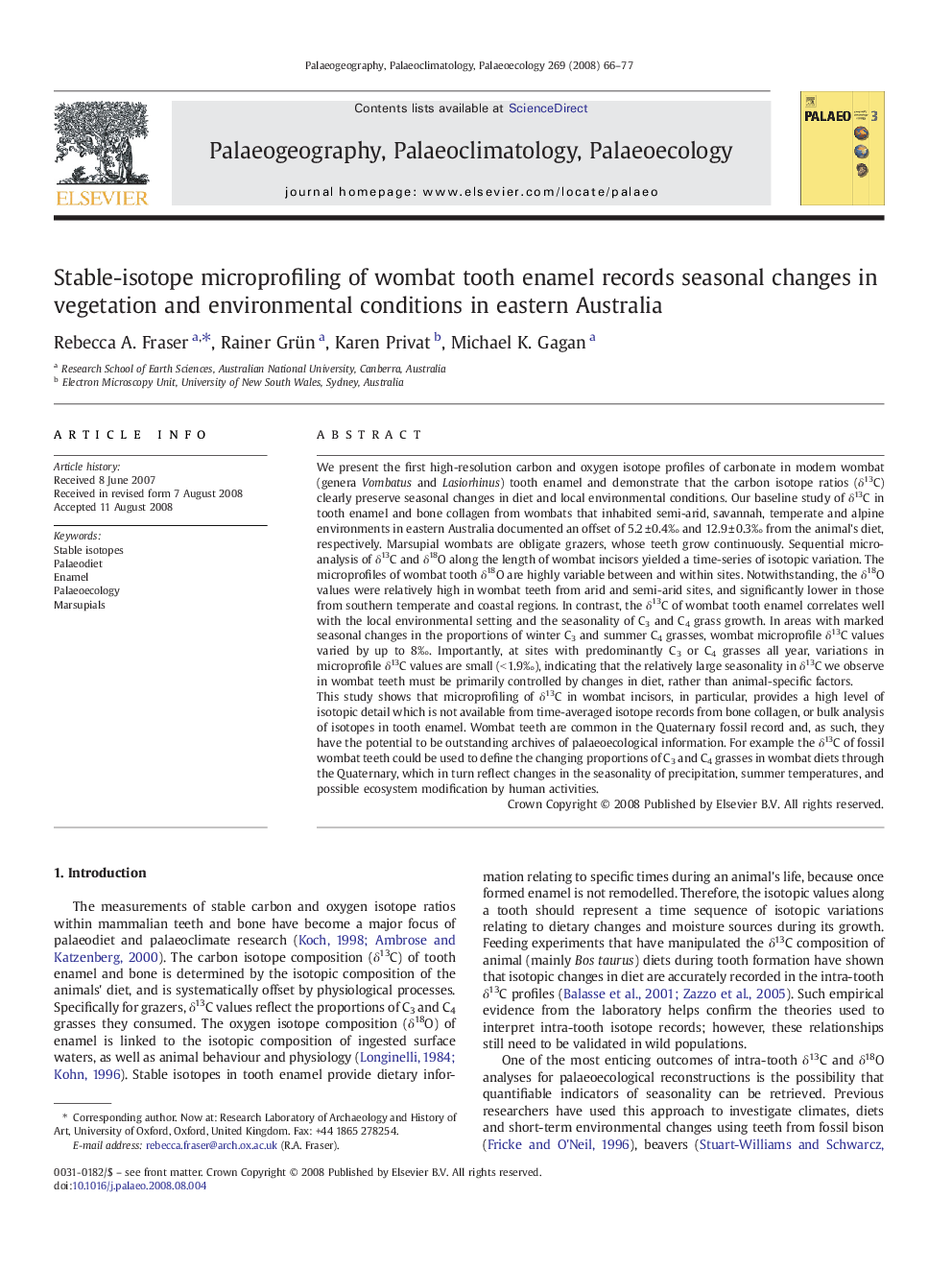| کد مقاله | کد نشریه | سال انتشار | مقاله انگلیسی | نسخه تمام متن |
|---|---|---|---|---|
| 4468427 | 1622316 | 2008 | 12 صفحه PDF | دانلود رایگان |

We present the first high-resolution carbon and oxygen isotope profiles of carbonate in modern wombat (genera Vombatus and Lasiorhinus) tooth enamel and demonstrate that the carbon isotope ratios (δ13C) clearly preserve seasonal changes in diet and local environmental conditions. Our baseline study of δ13C in tooth enamel and bone collagen from wombats that inhabited semi-arid, savannah, temperate and alpine environments in eastern Australia documented an offset of 5.2 ± 0.4‰ and 12.9 ± 0.3‰ from the animal's diet, respectively. Marsupial wombats are obligate grazers, whose teeth grow continuously. Sequential micro-analysis of δ13C and δ18O along the length of wombat incisors yielded a time-series of isotopic variation. The microprofiles of wombat tooth δ18O are highly variable between and within sites. Notwithstanding, the δ18O values were relatively high in wombat teeth from arid and semi-arid sites, and significantly lower in those from southern temperate and coastal regions. In contrast, the δ13C of wombat tooth enamel correlates well with the local environmental setting and the seasonality of C3 and C4 grass growth. In areas with marked seasonal changes in the proportions of winter C3 and summer C4 grasses, wombat microprofile δ13C values varied by up to 8‰. Importantly, at sites with predominantly C3 or C4 grasses all year, variations in microprofile δ13C values are small (< 1.9‰), indicating that the relatively large seasonality in δ13C we observe in wombat teeth must be primarily controlled by changes in diet, rather than animal-specific factors.This study shows that microprofiling of δ13C in wombat incisors, in particular, provides a high level of isotopic detail which is not available from time-averaged isotope records from bone collagen, or bulk analysis of isotopes in tooth enamel. Wombat teeth are common in the Quaternary fossil record and, as such, they have the potential to be outstanding archives of palaeoecological information. For example the δ13C of fossil wombat teeth could be used to define the changing proportions of C3 and C4 grasses in wombat diets through the Quaternary, which in turn reflect changes in the seasonality of precipitation, summer temperatures, and possible ecosystem modification by human activities.
Journal: Palaeogeography, Palaeoclimatology, Palaeoecology - Volume 269, Issues 1–2, 4 November 2008, Pages 66–77